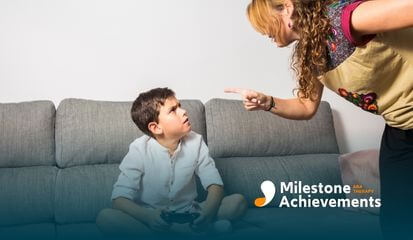
Does My 5 Year Old Have Behavioral Problems
Understanding Childhood Behavior: A Guide for Parents of 5-Year-Olds
Is Your Child Acting Out? Recognizing Behavioral Signs in Early Childhood
At age five, children are navigating a complex phase of development filled with new social skills, emotional milestones, and behavioral challenges. While some misbehavior is normal, persistent or severe issues may signal underlying concerns. This comprehensive guide explores how to identify, differentiate, and address behavioral problems in young children, helping parents support their child's healthy emotional growth.
Recognizing the Signs of Behavioral Issues in 5-Year-Olds

What are the signs and symptoms indicative of behavioral issues in a 5-year-old child?
Signs and symptoms of behavioral issues in a 5-year-old include frequent, intense temper tantrums that go beyond normal development. Children might show persistent defiance, refuse to follow instructions, or break rules consistently. Aggressive behaviors like hitting, kicking, or biting others are common indicators.
Furthermore, difficulty managing emotions such as anger, frustration, or disappointment can manifest as severe mood swings or crying bursts. Impulsivity, overactivity, and inattention are indicators linked to conditions like ADHD and often include restlessness, impulsive actions, or difficulty focusing.
Severe or ongoing disruptive behaviors like lying, stealing, bullying, or destructiveness may point toward disorders such as oppositional defiant disorder (ODD) or conduct disorder (CD). Social issues, such as trouble making or maintaining friendships, frequent conflicts, or social withdrawal, also suggest potential behavioral concerns. Identifying these signs early helps determine if professional assessment or intervention is necessary.
How can I differentiate between typical and problematic behaviors in a 5-year-old?
Normal behaviors at this age, such as occasional temper tantrums, defiance, or arguments, rarely interfere with daily functioning and tend to diminish over time. These behaviors are usually short-lived and context-dependent. In contrast, problematic behaviors tend to be persistent, intense, and occur across multiple settings, such as at home, preschool, or with peers.
Persistent defiance, frequent aggression, or tantrums that last more than six months and hinder the child's learning or socialization are red flags. Additionally, behaviors like lying, stealing, or threatening others that persist or escalate warrant further evaluation. Recognizing the pattern, severity, and consistency of behaviors helps in differentiating typical developmental challenges from concerning issues.
When should I seek professional help or assessment for my child's behavioral concerns?
Seeking professional help is advised when behaviors are persistent, severe, or impair the child's daily activities. Indicators include ongoing tantrums beyond the typical age, aggressive acts that pose safety concerns, severe defiance, or emotional dysregulation that does not respond to standard parenting strategies.
If such behaviors interfere with the child's ability to attend school, play with peers, or communicate effectively, and especially if they are combined with emotional issues like sadness or anxiety, consulting a pediatrician or mental health professional is essential.
Early assessment can help diagnose underlying conditions such as ADHD, autism spectrum disorder, oppositional defiant disorder, or mood disorders, enabling targeted interventions. Professionals may use interviews, questionnaires, behavioral observations, and input from caregivers and teachers to inform diagnosis and treatment planning.
What are common behavioral disorders in children, such as Oppositional Defiant Disorder and Conduct Disorder?
Oppositional Defiant Disorder (ODD) involves a pattern of hostile, disobedient, and defiant behaviors toward authority figures. Children often argue, blame others, and deliberately annoy or refuse to comply with rules, usually appearing before age eight.
Conduct Disorder (CD) is more severe, characterized by aggressive behaviors, violation of rights, and rule-breaking. Children with CD may bully, fight, vandalize, steal, or lie persistently. These behaviors threaten their social, familial, and educational development.
Both disorders vary in severity and require careful evaluation by specialists. The presence of these conditions can significantly hinder social integration and academic achievement.
How can parents effectively manage and address behavioral problems in children?
Effective management starts with establishing consistent routines and clear rules, helping children understand expectations. Positive reinforcement encourages good behavior through praise or rewards, which should follow specific actions to reinforce learning.
Applying calm, firm discipline responses such as brief time-outs or planned ignoring can de-escalate problematic behaviors. Building a strong relationship based on trust and emotional support reduces behavioral issues. Teaching children emotional regulation skills, like deep breathing or counting to ten, helps them manage frustrations.
Parents should also identify environmental triggers, such as fatigue, hunger, or overstimulation, and adapt routines accordingly. Utilizing parenting programs like Parent-Child Interaction Therapy (PCIT) offers tools to improve behavior management. Consistency, patience, and empathy are vital for fostering positive behavioral change.
What are some emotional regulation and developmental milestones related to childhood behavior?
Children develop emotional regulation skills gradually, with foundational milestones by age five. Early in life, infants start recognizing basic emotions and responding to caregivers' cues. Toddlers learn to manage simple feelings, such as frustration or joy.
By preschool age, children understand the concept of feelings, develop empathy, and begin to self-regulate better. They learn rules, cooperation, and social norms, which are essential for positive interactions.
In adolescence, children refine their emotional resilience and social skills, gaining independence and moral understanding. Recognizing these milestones helps parents identify delays or difficulties, allowing timely support.
What are effective parenting strategies for improving behavior in young children?
Consistent routines and clear boundaries give children a sense of security. Positive reinforcement, including verbal praise and tangible rewards, promotes desirable behaviors.
Calm, consistent responses to misbehavior, like brief time-outs or redirection, teach self-control. Building a trusting relationship through active listening, validation, and empathy helps children feel secure.
Teaching problem-solving and emotional regulation skills enhances their capacity to handle frustrations and conflicts. Parental modeling of respectful behavior underscores the importance of good social skills.
Engaging in ongoing parent education and seeking professional support when behaviors persist ensures sustained progress.
How do I know if my 5-year-old needs behavioral therapy?
If problematic behaviors such as frequent tantrums, defiance, or emotional outbursts persist over time and interfere with daily life, behavioral therapy may be beneficial. Indicators include difficulty controlling anger or frustration, escalating aggression, or social withdrawal.
Signs like sudden mood changes, destructive actions, or self-harm require urgent professional assessment. If behaviors disrupt family routines, academic performance, or peer relationships, consulting a mental health professional or pediatrician is essential.
Early intervention can address underlying developmental or mental health issues, supporting better emotional and social outcomes for your child.
Navigating Emotional Triggers and External Influences on Behavior

Impact of stress, fatigue, and unmet desires on behavior
Children's behavior often reflects their internal emotional state and physical well-being. Stressful situations, such as family conflicts or academic pressures, can lead to increased temper tantrums or withdrawal. Fatigue and tiredness reduce a child's emotional resilience, making it harder for them to cope with everyday frustrations. Unmet desires, like wanting a toy or attention, can also trigger acting out or whining. Recognizing these signals helps caregivers address underlying needs, such as ensuring adequate rest and meeting emotional demands.
Role of environmental triggers like noise, overcrowding, and changes in routine
External stimuli like loud noises or crowded spaces can overwhelm sensitive children, especially those with sensory processing issues or autism spectrum disorder. Overstimulation in noisy playgrounds or busy malls often results in meltdowns or withdrawal. Similarly, abrupt changes in routine—like switching activities or moving homes—may cause confusion and distress. Preparing children in advance for transitions and creating calmer environments can minimize these reactions.
Understanding how hunger and tiredness affect behavior
Hunger and tiredness are fundamental factors influencing mood and cooperation. When children are hungry, they may become irritable, aggressive, or inattentive. Likewise, insufficient sleep can diminish self-control and increase emotional outbursts. Ensuring regular, nutritious meals and promoting good sleep routines are essential strategies to maintain optimal behavior.
Influence of family dynamics, recent life changes, and parental mental health on child behavior
Family stability plays a crucial role in a child's emotional regulation. Recent life changes such as a new sibling, divorce, or moving can generate feelings of insecurity, leading to tantrums or regressions. Parental mental health also impacts children; stressful environments can reduce emotional regulation in children. Providing reassurance, maintaining routines, and seeking professional support when needed can help children adjust better during difficult times.
Developmental milestones and emotional regulation
Children develop emotional regulation skills gradually. Early milestones include recognizing and responding to caregiver emotions during infancy. By toddlerhood, children start managing simple feelings like pride or guilt and understanding social cues. As they grow, they learn to cope with disappointment, control impulses, and empathize with others. These milestones are supported by positive interactions, consistency, and teaching emotional vocabulary.
External factors influencing behavior: a summary
| External Factors | Effects on Behavior | Suggestions |
|---|---|---|
| Stress & Anxiety | Tantrums, withdrawal | Provide reassurance, routines |
| Noise & Overcrowding | Meltdowns, sensory overload | Create quiet spaces, prepare child |
| Hunger & Tiredness | Irritability, impulsivity | Ensure proper meals and sleep |
| Family & Life Changes | Anxiety, regressions | Maintain stability, seek support |
Understanding these influences allows caregivers to adjust their responses and environments. Creating a predictable, supportive space helps children develop healthy emotional regulation and minimizes disruptive behaviors.
Supporting Your Child’s Emotional and Behavioral Development
Observing and understanding the complex array of factors influencing a 5-year-old's behavior is essential for effective support and intervention. Differentiating between typical developmental behaviors and signs of underlying issues requires careful assessment of patterns, severity, and context. Early professional guidance can identify conditions such as ADHD, ODD, or Autism Spectrum Disorder, enabling tailored therapies and strategies. Adopting consistent routines, positive reinforcement, and empathetic communication forms the foundation of effective parenting. Recognizing external influences like stress, fatigue, or environmental overstimulation allows parents to create calming, predictable environments that foster emotional regulation. Remember, challenging behaviors often stem from developmental needs or unmet emotional requirements. Patience, support, and professional assistance can help your child navigate their emotions healthily, laying the groundwork for social competence and emotional resilience.
References
- Common Causes of Behavior Problems in Kids - Child Mind Institute
- Behavioural disorders in children | Better Health Channel
- 5 Signs Your Child's Behavior Is Out of Control - Verywell Mind
- Dealing with child behaviour problems - NHS
- Diagnosing Behavioral Problems in Children - NYU Langone Health
- Behaviour Problems in 5 Year Olds - Causes and Discipline Strategies
- My 5-year-old doesn't listen to me and is disrespectful.
- Understanding and responding to behaviour: 4 to 7 years - gov.wales
- Common Child Behavior Problems and Their Solutions - Parents


Partner with us on your child's journey
Milestone Achievements offers evidence-based ABA therapy to help children with autism reach their full potential. Together we’ll set meaningful goals and celebrate progress every step of the way.
Start ABA Services Today


